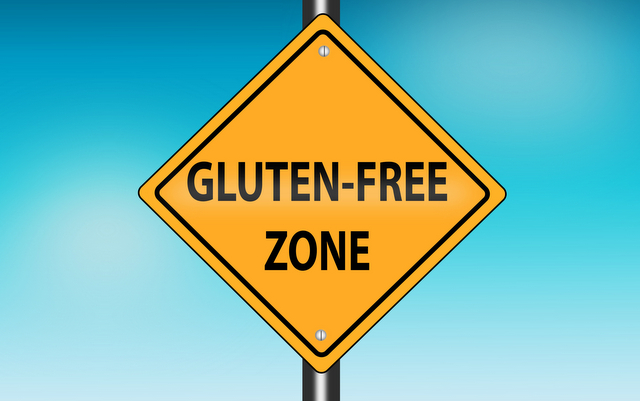Once regarded as a niche market, gluten-free craft beers are now finding mainstream popularity. The rising number of gluten-free consumers and their quest for more variety and better tasting products is driving an explosion in demand for gluten-free beers. Gluten-free brand Holidaily Brewing Co., that certifies products through the Gluten-Free Certification Organization (GFCO), even won Craft Brewer of the Year in the Colorado Manufacturing Association Awards for 2022. For craft brewers who want to grow their brand, offering a gluten-free beer can be a way to expand into a booming market.
Driven in part by consumer demand for new and unique flavors during the pandemic, the global gluten-free beer market shows no signs of slowing down now that people are dining out again. Craft brewers can tap into this thriving market by sourcing gluten-free ingredients, adopting safe practices for cleaning and testing gluten-free brewing equipment and labeling their finished product to meet Alcohol and Tobacco Tax and Trade Bureau (TTB) and FDA requirements.
With a projected compound annual growth rate of 13.78 percent for 2022-2026, the growing gluten-free beer market reflects part of a larger trend toward novel drinking experiences. Eager to meet the needs of a vocal and growing gluten-free community, which currently consists of 23 percent of U.S. shoppers, brewers are offering a greater variety of gluten-free beers with an ever-expanding flavor portfolio — for example, fruit flavors and Oreo cookie-inspired brews.
Why transparency in labeling is driving greater adoption
While more craft brewers are adding gluten-free beers to their lineup, adoption of this trend has been a long time coming. Prior to a 2014 ruling by the TTB, many brewers were reluctant to launch gluten-free lines because of confusion over terminology and labeling requirements, which would make consumers reluctant to trust or buy them. A primary source of confusion concerned the terms “gluten-removed” and “gluten-free.” Dig our previous article on the subject. Gluten-removed beers are produced when brewers make a normal barley-based beer, then use an enzyme to attempt to break down gluten proteins. Although in Europe these beers are sold as “gluten-removed” provided the final product contains less than 20 ppm of gluten, in this country, the 2014 ruling by the TTB requires gluten-free beers to be made with 100 percent gluten-free source ingredients.
The TTB made this ruling in part because of the potential hazard that residual gluten proteins from gluten-removed beers present to people with celiac disease and other forms of gluten sensitivity. Independent testing conducted by the Gluten-Free Certification Organization revealed that antibodies in patients with celiac disease recognized these residual gluten proteins in gluten-removed beers. For this reason, the GFCO refuses to certify gluten-removed beers and the FDA will not allow brewers to label gluten-removed beers as “gluten-free.”
What’s involved in brewing a great gluten-free beer

With an updated ruling released by the TTB in 2020, which recognizes it is currently impossible to accurately measure gluten proteins in fermented and hydrolyzed foods, the focus is now on ensuring that all starting materials are gluten-free before fermentation or hydrolysis occurs. Brewers — and consumers — now have even more clarity regarding the labeling and advertising of malt beverages. Many are now rushing to fill the increasing demand for gluten-free beer.
When getting started, many brewers wonder whether they need to use a dedicated facility to brew gluten-free beer. The short answer is no, but it can be extremely difficult to get into equipment and wash it thoroughly enough to produce a negative protein swab test (which is what you would need since gluten-specific tests can’t be used), especially if you’re sharing large tanks for boiling mash or fermenting your brews, plus tubing and bottling equipment. For this reason, the GFCO and other gluten-free organizations recommend using dedicated equipment to brew and bottle gluten-free beer.
As for the brewing process, the same steps are used to produce gluten-free and traditional beers, the difference is, in the United States you need to source and start with gluten-free ingredients if you want to label your beer as gluten-free. Sorghum used to be the go-to ingredient, but brewers are now experimenting with rice beers or a mash-up of gluten-free grains. You also want to avoid pitching yeast from barley beers in your gluten-free batches. Fortunately, craft operations are typically small-scale enough to use commercially available, dried yeasts, most of which are already gluten-free. Whatever ingredients you use, it’s important to verify that your ingredients don’t contain gluten, even if they’re inherently gluten-free, because of the risk of cross-contact during harvesting and transportation.
When sourcing ingredients, especially when procuring gluten-free grains, it’s best to work with suppliers who market specifically to gluten-free manufacturers. If you have questions about where to source ingredients, gluten-free organizations can be a great resource. For example, the GFCO has a database on their website that lists gluten-free products for retail and industrial distribution.
The benefits of certification
In addition to sourcing certified gluten-free ingredients, you may want to certify your own gluten-free beers. Having a gluten-free mark on your label is a huge selling point for savvy gluten-free consumers, as well as friends and family who may be considering their needs when shopping, and the certification process is very straightforward. During the certification audit, your assessors will verify that your starting source materials are gluten-free and that you have appropriate controls in place to ensure you’re not introducing gluten into your final product. Certifying organizations can also provide guidance on testing your products and equipment.
With the right ingredients, a safe brewing process and some help from gluten-free experts, you can make your gluten-free beer the star attraction of any special event, whether it takes place at a public gathering or in the privacy of someone’s home — and tap into the gluten-free beer trend.
Laura K. Allred, Ph.D. is the regulatory manager for the Gluten Intolerance Group’s Gluten-Free Certification Organization (GFCO). Allred has a background in immunology and eight years of experience directing a food testing laboratory and test kit manufacturing operation. The GFCO certification mark is the symbol of trust for the gluten-free community, with more than 60,000 products certified worldwide. For more information, visit www.gluten.org and www.gfco.org





Leave a Reply
You must be logged in to post a comment.